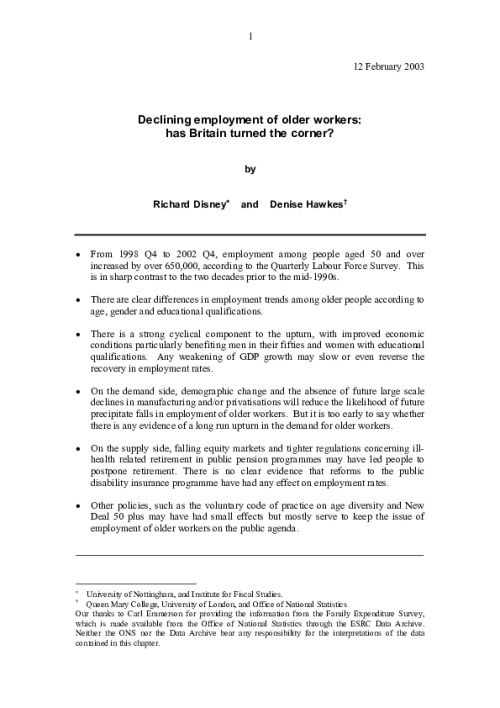-
From 1998 Q4 to 2002 Q4, employment among people aged 50 and over
increased by over 650,000, according to the Quarterly Labour Force Survey. This
is in sharp contrast to the two decades prior to the mid-1990s.
- There are clear differences in employment trends among older people according to age, gender and educational qualifications.
- There is a strong cyclical component to the upturn, with improved economic conditions particularly benefiting men in their fifties and women with educational qualifications. Any weakening of GDP growth may slow or even reverse the recovery in employment rates.
- On the demand side, demographic change and the absence of future large scale declines in manufacturing and/or privatisations will reduce the likelihood of future precipitate falls in employment of older workers. But it is too early to say whether there is any evidence of a long run upturn in the demand for older workers.
- On the supply side, falling equity markets and tighter regulations concerning illhealth related retirement in public pension programmes may have led people to postpone retirement. There is no clear evidence that reforms to the public disability insurance programme have had any effect on employment rates.
- Other policies, such as the voluntary code of practice on age diversity and New Deal 50 plus may have had small effects but mostly serve to keep the issue of employment of older workers on the public agenda.











